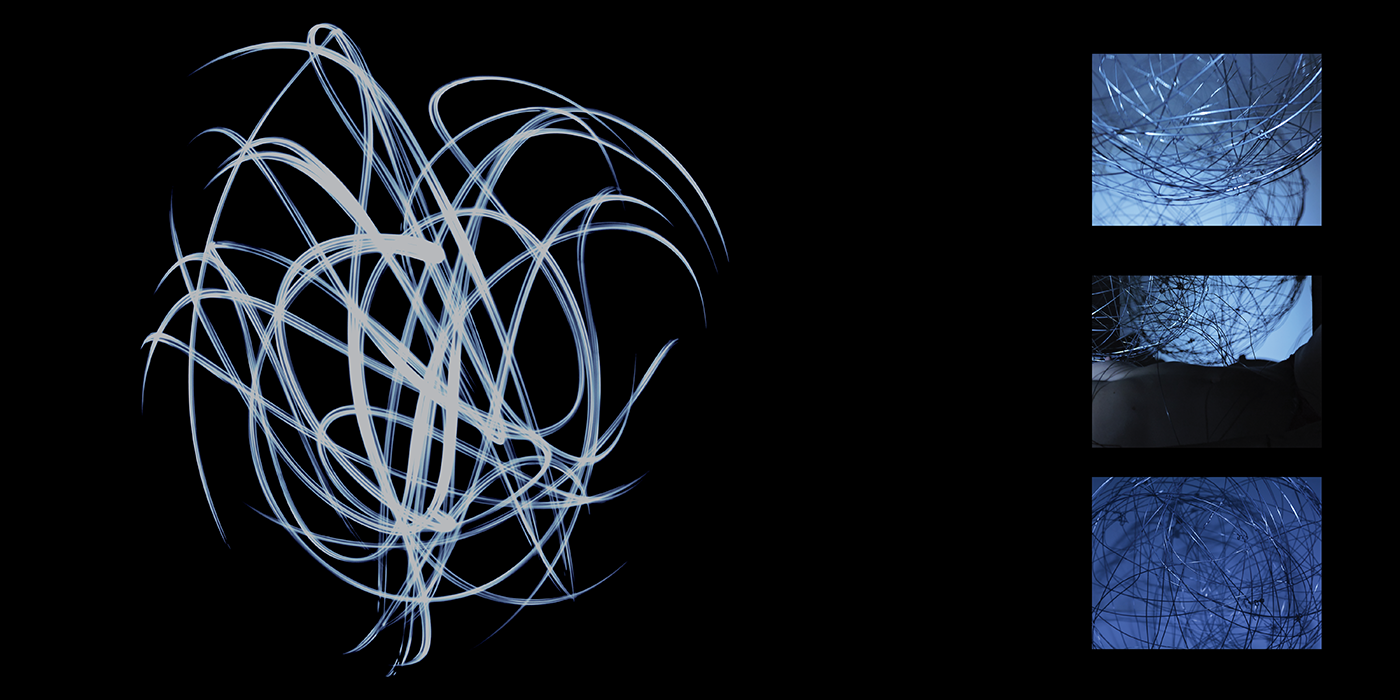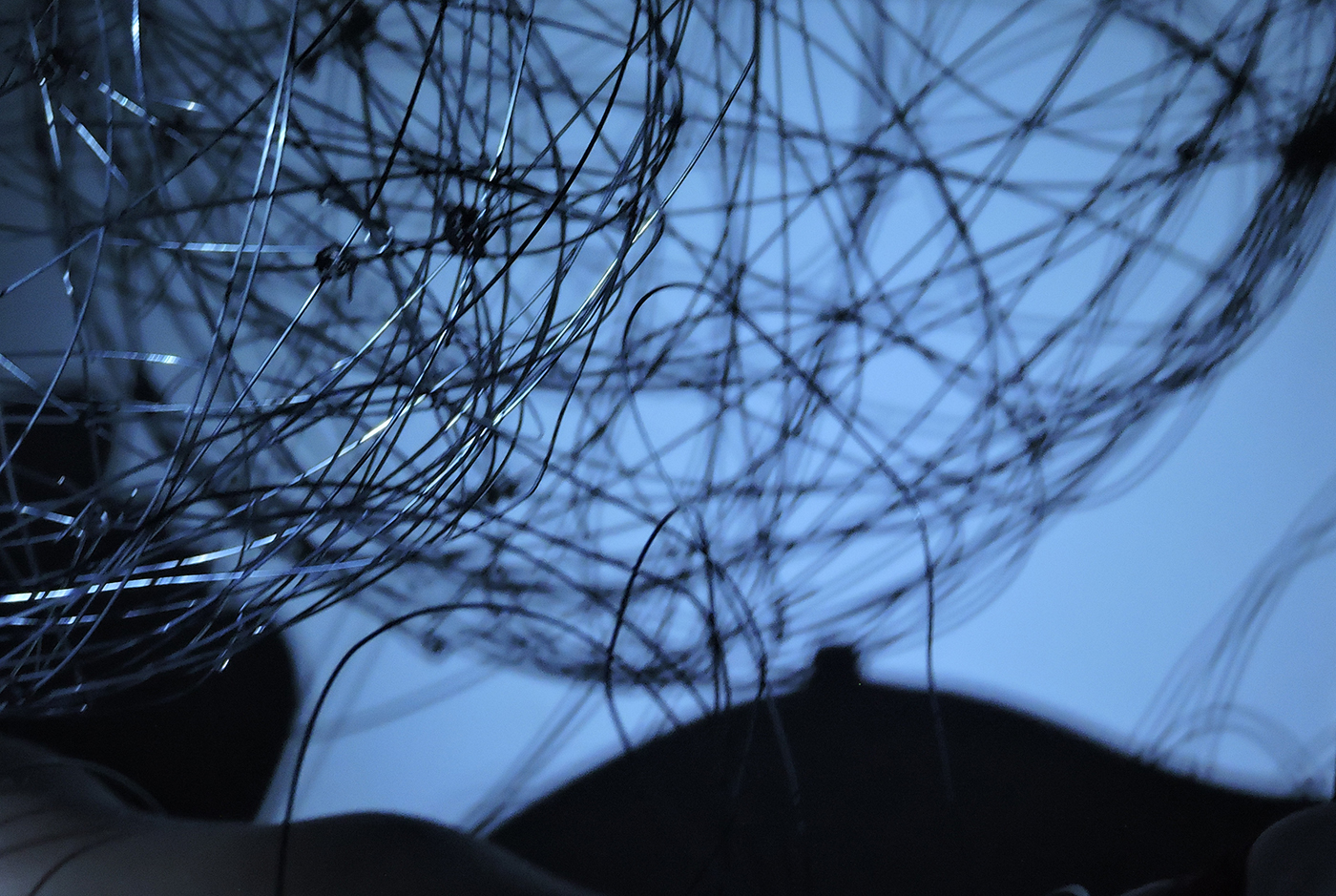Zobeide
Invinsible Cities - Italo Calvino
BA Honors Degree - AKTO College
Mariza Vasilikopoulou


• Zobeide:
Zobeide’s story was a fictional story written by Italo Calvino (1974) into his book entitled “Invisible cities”, in which he intends to create a dialogue from Marco Polo – an Italian merchant and so exiled - to a Tatar emperor called Kublai Khan about the cities he visited once. Interesting is that every city he (Polo) describes has a woman’s name. Zobeide is the only one that was once mentioned into the “Arabian Nights”, as the name of the Caliph Harún-al Rashid’s wife.
Some men, one night had the same dream. They saw a woman running at night through an unknown city; she was seen from behind, with long hair, and she was naked. They dreamed of pursuing her. As they twisted and turned, each of them lost her...
The next day, they decided to build a city modeled on the one in their dream with one exception: "In laying out the streets, each followed the course of his pursuit; at the spot where they had lost the fugitive's trail, they arranged spaces and walls differently from the dream, so she would be unable to escape again".
Everyday, they went the same walk they did in their dream with the hope and belief they would see the girl. Everyday they did the same routine searching for their vision but no one saw that girl ever again, neither in their sleep nor when they were awake.
At the end of Calvino’s story about Zobeide, new men, who have also dreamed of the elusive woman, come to Zobeide and redesign it so that the woman will not be able to escape at the point where she did in their dreams. They cannot understand what drew the original settlers to Zobeide, “this ugly city, this trap”. They do not understand that they too are creating a trap out of their blind desire to possess the woman. Though their intention to trap the woman was the same as the original founders, both groups are equally blinded. They do not realize that their desire for this woman will lead them to build an equally ugly and prison-like city. The ugliness of their desire becomes the ugliness of the built environment.

• Analysis:
According to some analysts like, Teresa de Lauretis in "Alice Doesn't", Zobeide is a perfect “representation of the paradoxical status of the woman in Western discourse” about the absence of women into the Western thinking, although culture is originated from woman, she is absent from cultural and historical process. “Women are absent as historical subjects”.
According to Lianne Moyes analysis, the city can be read as a trace of the desires of those who construct it- its poets and storytellers as much as its architects and bureaucrats. In this issue, the former not only expose the ideologies that subtend urban planning, traffic laws, the organization of the workplace, police protection, prostitution, "black on black" fashion, and so forth, they also offer an alternative map of the city, an alternative cartography of desire. As a space traditionally mapped by men's desire, by men's economic privilege, a space whose otherness is so much a part of the (male) onlooker that it inspires both fascination and revulsion, the city is a space in which women do not circulate freely. This is not to suggest that women's relationship to urban culture is uniform or transhistorical. The particular knot of ethnicity, race, sexuality, and class that locates a woman in relations of power has a radical effect on the avenues open to her.Moreover,
contemporary women have engineered a variety of interventions in the prevailing representations of urban culture. Theirs is an ongoing
struggle with a structure that is "constantly rebuilt to keep woman captive." In this sense, the story of Zobeide can be read as an allegory of
historical shifts in the social imaginary that regulate women's access to culture.
contemporary women have engineered a variety of interventions in the prevailing representations of urban culture. Theirs is an ongoing
struggle with a structure that is "constantly rebuilt to keep woman captive." In this sense, the story of Zobeide can be read as an allegory of
historical shifts in the social imaginary that regulate women's access to culture.



• Logo:
We had to design, a logo for the chosen city. Zobeide, as we said above, is a vision of nightly, blured dream. They all saw something but noone could define it or rebuilt it like the prototype.
In Graphic Design, there are specific rules on making a logotype. It has to be clean, memorable and distinct. Despite all these, the certain logotype doesn't follow the classic form or the rules of the Graphic Design and the reason is that I wanted to represent that blurred vision in an artistic way.The project was beyond the strict limits and lines so I decided to design a more freestyle, dreamy and complex logo.
The title of the logo, is based in "Creepy" Font by AKA Acid which is font remind the wire of the ball and also giving that limitless sketchy sensation of the city.


• Illustration:
One other part of the BA (Subject) course was to illustrate the city we had chosen. My design is based on the idea of a security room full of screens watching all over the city looking for the girl. She's there and nowhere.
The illustration portrays the truth and the faulse of its citizens. They are obssesed about finding the girl losing their ability to see beyond their phobias and delusions which keep them apart from real life.
The illustration portrays the truth and the faulse of its citizens. They are obssesed about finding the girl losing their ability to see beyond their phobias and delusions which keep them apart from real life.


• Photo Archive:
This project course draw upon the photographic archive, collected throughout its execution. First, I had to costruct a metal sphere, a ball-skein made by wires, then I placed it in several points, heights and lenghts then I illuminated it with a cold almost white light from different points. I shooted in as many different angles in order to get the best possible result.
We could say, that this archive is divided in two different parts. The first consists of photos with the sphere of Zobeide standing alone in the dark and the second one consists of scenes where the ball "co-exist" with a female figure either on background rather in front of it.
This photographic archive, forms the very first basis of the developement of this course. The logotype, the illustration even the short film pumped from this archive in order to carry through the project.














• Movie:
The movie is a combination of photos, videos and illustrations. It was more like an expirement in art, imagination and of course After Effects rather than a premeditated plan.
The movie follows the Calvino's story of Zobeide in Invinsible Cities but it's not a blind representation of what Calvino says. The movie wants to bring in artistic way the words of Zobeide in life using the tools a Graphic Designer has. Pencils, Photshop,Illustrator, After Effects, Wacom, Camera and his/her imagination.
*You can find the movie at the top of the page!
Otherwise: https://vimeo.com/213007568
Otherwise: https://vimeo.com/213007568











• The end:
First of all I would like to thank my tutors, George Theodorou and Artemis Roussos for their guidance, advices and patience as well as my college, AKTO.
Then I would like to thank Danae Giannouli and Mahi Katsiouleri for their invaluable help. I also would like to thank Michalis for his comprehension and support.
Finally, I would like to thank everyone who read this and I would be happy to hear your feedback!









